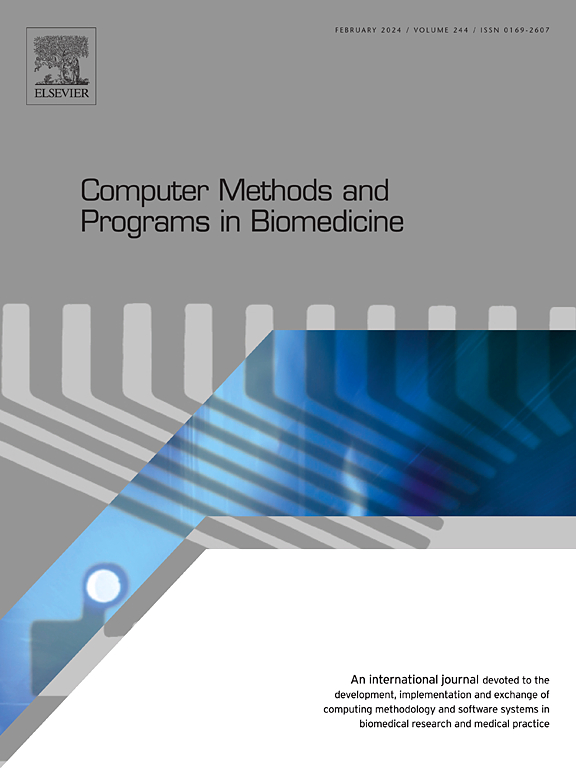SP-XTIN: A single projection grating-based X-ray tri-contrast imaging network
IF 4.9
2区 医学
Q1 COMPUTER SCIENCE, INTERDISCIPLINARY APPLICATIONS
引用次数: 0
Abstract
Background and Objective:
Grating-based X-ray imaging (GBXI) enables the acquisition of tri-contrast signals—absorption, phase, and dark- field—making it highly promising for applications in clinical diagnostics. However, traditional GBXI requires phase stepping of gratings, leading to high radiation doses. In this study, a single projection grating-based X-ray tri-contrast imaging network (SP-XTIN) is proposed.
Methods:
A Pix2pixHD-based architecture is adopted, and a multi-task learning strategy is employed to transform the generator into a multi-output model that can simultaneously generate tri-contrast images. Additionally, an edge loss term is integrated into the loss function to enhance edge preservation in the tri-contrast images.
Results:
The proposed SP-XTIN is validated on two experimental datasets: one acquired with synchrotron radiation (SR) and another using a laboratory X-ray tube source. For the SR dataset, the feature similarity index measure (FSIM) values for absorption, phase, and dark-field signals achieved were 0.9871, 0.9863, and 0.9786, respectively. Using the laboratory X-ray tube source dataset, the FSIM values were 0.9883, 0.9670, and 0.9631.
Conclusion:
The proposed SP-XTIN is effective in advancing GBXI technology. These results highlight its effectiveness and are expected to contribute to the further development of this field.
求助全文
约1分钟内获得全文
求助全文
来源期刊

Computer methods and programs in biomedicine
工程技术-工程:生物医学
CiteScore
12.30
自引率
6.60%
发文量
601
审稿时长
135 days
期刊介绍:
To encourage the development of formal computing methods, and their application in biomedical research and medical practice, by illustration of fundamental principles in biomedical informatics research; to stimulate basic research into application software design; to report the state of research of biomedical information processing projects; to report new computer methodologies applied in biomedical areas; the eventual distribution of demonstrable software to avoid duplication of effort; to provide a forum for discussion and improvement of existing software; to optimize contact between national organizations and regional user groups by promoting an international exchange of information on formal methods, standards and software in biomedicine.
Computer Methods and Programs in Biomedicine covers computing methodology and software systems derived from computing science for implementation in all aspects of biomedical research and medical practice. It is designed to serve: biochemists; biologists; geneticists; immunologists; neuroscientists; pharmacologists; toxicologists; clinicians; epidemiologists; psychiatrists; psychologists; cardiologists; chemists; (radio)physicists; computer scientists; programmers and systems analysts; biomedical, clinical, electrical and other engineers; teachers of medical informatics and users of educational software.
 求助内容:
求助内容: 应助结果提醒方式:
应助结果提醒方式:


